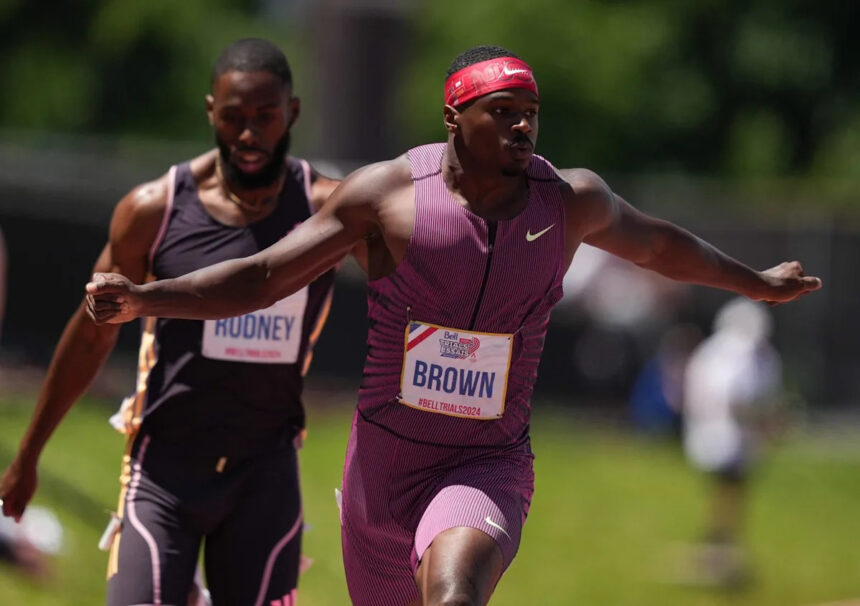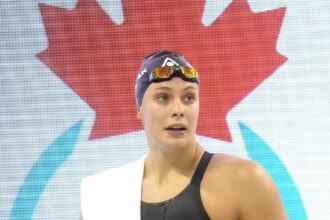In the quiet aftermath of another international athletics season, something remarkable is stirring in Canadian track and field. Olympic sprinter Aaron Brown’s Grand Slam track event, which debuted this past summer, is generating buzz well beyond its inaugural showing—and for good reason. What began as an athlete’s vision to transform how track meets engage audiences has blossomed into what many industry insiders are now calling a potential game-changer for the sport’s popularity in North America.
The event’s format was refreshingly innovative: elite competition paired with an atmosphere more reminiscent of an NBA game than a traditional track meet. Music pumped through speakers between races, announcers provided colorful commentary, and athletes were introduced with the fanfare typically reserved for major league sports stars. The result was electric—a sold-out Toronto venue with spectators who remained engaged from the first starting gun to the final medal ceremony.
“What Aaron has created isn’t just another track meet,” explains sports marketing analyst Marie Léveillé. “It’s a reimagining of how athletics can be packaged for contemporary audiences who expect entertainment alongside athletic excellence.”
Brown, a three-time Olympian and fixture on Canada’s sprint scene for over a decade, developed the concept after years of competing internationally in Diamond League events across Europe, where track and field regularly draws substantial crowds. The stark contrast with North American attendance figures prompted his entrepreneurial leap.
“The talent has always been here,” Brown noted in a recent interview. “What’s been missing is the presentation—the story, the spectacle, the connection with fans who might not follow split times but can absolutely appreciate the drama of head-to-head competition.”
What sets the Grand Slam apart from previous attempts to revitalize track in Canada is its athlete-centered approach. Competitors receive guaranteed appearance fees rather than relying solely on performance bonuses—a model that provides financial stability often lacking in the sport. This structure has already attracted commitments from several international stars for next year’s expanded schedule.
Athletics Canada has taken notice. The national governing body has expressed interest in potentially incorporating elements of the Grand Slam format into future national championships, recognizing that sustainable growth requires innovation. The youth engagement aspect particularly impressed officials, with local track clubs reporting increased registration inquiries following the event.
Canadian sports historian Dr. James Richardson places Brown’s initiative in a broader context: “We’re seeing athletes increasingly take control of their narrative and commercial potential across sports. What makes this fascinating is that Brown isn’t waiting for retirement—he’s building the future of his sport while still competing at its highest level.”
The economic impact extends beyond the track. Local businesses reported significant upticks in activity on event day, and tourism officials have already begun discussions about positioning future Grand Slam events as destination attractions. Corporate sponsors, often hesitant to invest in track and field outside Olympic years, have shown renewed interest in the property.
Critics might question whether such entertainment-focused presentations dilute the purity of athletic competition, but attendance figures suggest this approach may be essential for survival. When traditional meets struggle to fill seats while the Grand Slam sells out, the message becomes clear: evolution is necessary.
For the average sports fan who might only watch track during Olympic years, the Grand Slam offers an accessible entry point. By highlighting personalities alongside performances and creating narratives that extend beyond simple time comparisons, Brown has created something that resonates with casual viewers without alienating purists.
As we look toward next summer’s expanded Grand Slam series, the question becomes not whether track and field can capture the public imagination, but rather why it took an athlete’s initiative to demonstrate how it should be done. Perhaps there’s a lesson here for other Olympic sports struggling for relevance in the crowded North American sports landscape.
Will Aaron Brown’s vision become the template for track and field’s future? The starting blocks are set, and the sport appears ready to sprint toward a new horizon.
For more analysis on cultural innovations in sport, visit CO24 Culture or explore emerging trends at CO24 Trends.


















